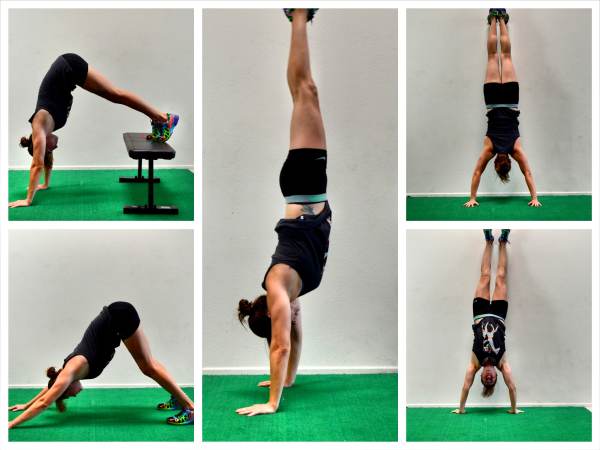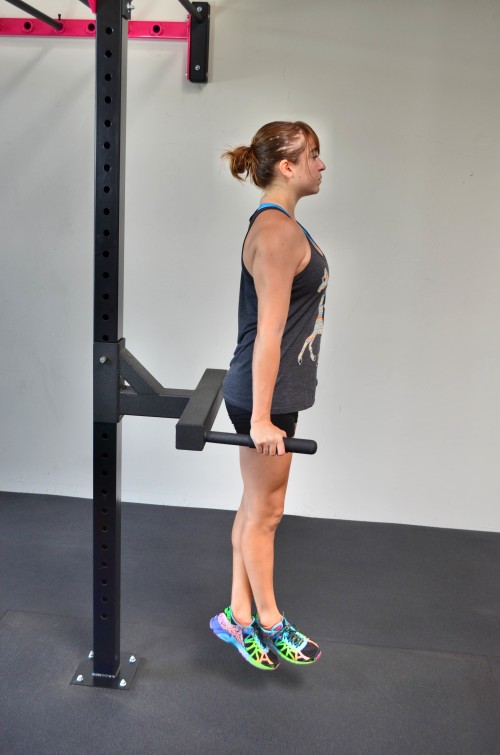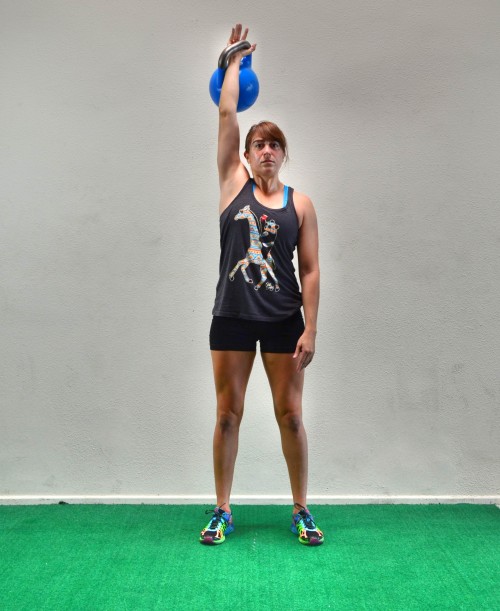WARM UP
Stretch and Roll Out:
Wrists/Forearms
Chest
Shoulders
Traps
WORKOUT
Complete 1-2 rounds of the Isometric circuit. Rest up to 30 seconds between holds if needed. Then complete 3-5 rounds of the second circuit. Rest 1-2 minutes between the circuits and each round.
CIRCUIT #1:
30 seconds – 1 minute Handstand Hold
30 seconds – 1 minute High Plank Hold
30 seconds – 1 minute Dip Hold
CIRCUIT #2:
5-10 reps Push Up With Holds
10-20 reps Dips off Bench
20-50ft walks each side Single Arm Overhead Carry
COOL DOWN
Stretch and Roll Out:
Wrists/Forearms
Chest
Shoulders
Traps
NOTES:
Do the hardest variation of each isometric hold that you can. Hold for at least 30 seconds. Take time between the exercises if needed so that you can do your best on each exercise.
For the second circuit, take time between each exercise if needed so that you can get the most out of each move. Don’t slack on any exercise just so you can move more quickly through the circuit. It is better to rest and go to failure on each exercise than to complete the workout quickly.
EXERCISE DESCRIPTIONS:
Handstand Hold – Beginners will want to do a modified handstand, almost like a downward dog. Set up on your hands and knees. Then push your butt up in the air and drive your chest back toward your knees. Try to get your back as flat as possible, driving your butt up. Do not worry if your legs stay straight. The most important part is pressing your chest toward your knees so your back stays flat. To advance, you can put your feet up on a table or chair. However, the hardest variation is walking your feet up the wall and walking your hands back toward the wall. The closer and more parallel to the wall you are the harder the hold. Make sure that on each variation, you draw your shoulder blades down and back and draw your belly button in toward your spine. Squeeze your glutes also to keep your low back safe.

High Plank Hold – Set up on your hands and toes (advanced) or hands and knees (beginner). Feet are together and hands are underneath your shoulders. Draw your belly button into your spine and squeeze your quads, glutes and adductors. Your shoulder blades should be down and back and your shoulders shouldn’t be up by your ears. Do not let your upper back round. Keep your head in line with your spine. If you really draw your belly button in and tilt your pelvic forward, your abs should almost instantly start shaking.

Dip Hold – Beginners can do this from a bench while more advanced exercisers can do this off of dip bars or parallel bars. Press up to the top of the dip with arms straight and shoulder blades drawn down and back. Do not tuck your chin or shrug your shoulders. Really press your chest out and maintain a nice tall posture. Your body should hang straight down if on the parallel bars or you should sit like at the top of the dip off the bench. Hold that position.

Push Up With Holds – Set up on an incline or on your hands and knees (beginner) or hands and toes (advanced). You want your feet together and your hands just outside your chest. Your body should be in a nice straight line. Hold for 5 seconds at the top of the push up with your arms locked out and your belly button pulled in toward your spine. Then lower down to the mid-point of the push up. Your arms should be bent to just about 90 degrees. Hold there 5 seconds. Then lower down so you are just hovering above the ground and hold there 5 seconds before quickly pressing back to the top of the push up. Your body should move as one unit as you lower and it should be in a nice straight line as you hold. Do not let your hips sag or your butt go up in the air. Do not tuck your head toward the ground or shrug your shoulders. Then quickly press back up from the bottom and repeat with a 5 second hold at the top.

Dips off Bench – Place both hands on the bench behind you. Your finger tips should hang over the bench and face you. Stretch your legs out then in front of you. The straighter your legs are and the further your heels are from your butt, the harder the move will be. Bend your elbows and drop your butt toward the ground. Drop so your upper arms are parallel to the ground then press back up. Keep your butt and back right up agains the bench. Do not let your body drift forward. Advanced exercisers may want to place their feet up on a bench as well and even put a weight on their lap.

Single Arm Overhead Carry – Take one kettlebell and place your hand through the handle. Rest the kettlebell on the back of your forearm. Press your hand up toward the ceiling, straightening your arm up by your ear. Do not arch your low back. Keep your core tight and your arm up straight toward the ceiling. Do not lean to either side. Walk 20-50ft holding the kettlebell still overhead and then switch the bell to the other hand. If you don’t have much space, hold it overhead and walk around for at least 15-20 seconds.
